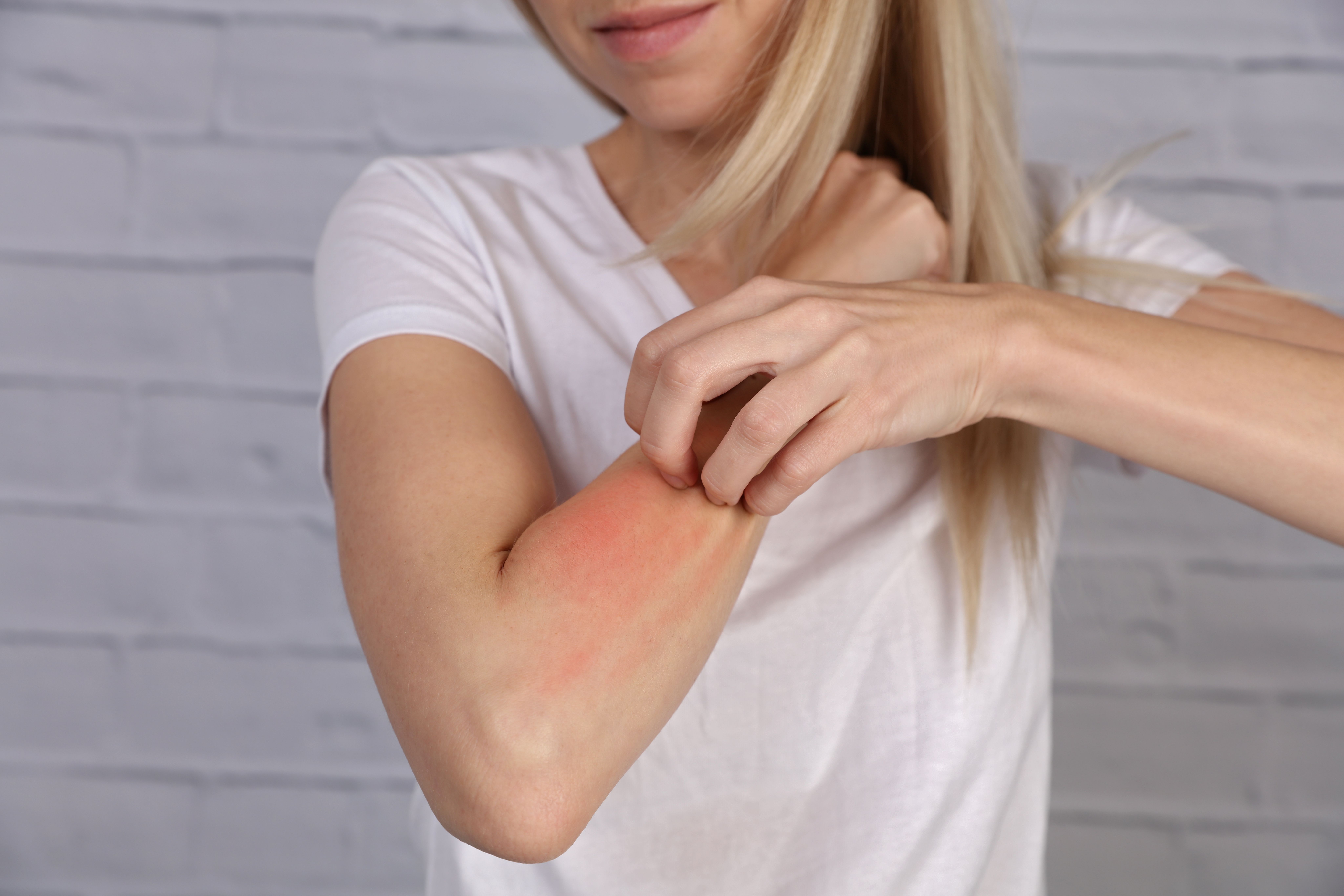
- Case-Based Roundtable
- General Dermatology
- Eczema
- Chronic Hand Eczema
- Alopecia
- Aesthetics
- Vitiligo
- COVID-19
- Actinic Keratosis
- Precision Medicine and Biologics
- Rare Disease
- Wound Care
- Rosacea
- Psoriasis
- Psoriatic Arthritis
- Atopic Dermatitis
- Melasma
- NP and PA
- Skin Cancer
- Hidradenitis Suppurativa
- Drug Watch
- Pigmentary Disorders
- Acne
- Pediatric Dermatology
- Practice Management
- Prurigo Nodularis
- Buy-and-Bill
Article
Assessing Itch Severity and Skin Clearance Supports Shared Decision Making
Author(s):
New data from RAD 2023 revealed the results of assessing the independent and combined effects of itch and skin severity on patient-reported symptoms and QoL.
dream@do/AdobeStock

According to a poster presentation from the 2023 Revolutionizing Atopic Dermatitis conference in Washington, DC, complete or almost complete relief of both itch and skin lesions is associated with an increased chance of achieving ideal states in patient-reported outcomes (PROs) and the Dermatology Life Quality Index (DLQI).1
Silverberg et al sought to investigate and understand the combined impact of itch and skin severity on patient-reported symptoms and quality of life outcomes in patients with atopic dermatitis, as they noted there is limited evidence examining the combined impact.
Adult patients 18 years or older were enrolled in TARGET-DERM AD, an observational, longitudinal study of patients with atopic dermatitis across 43 academic/community centers in the United States and Canada (n=3158). The longitudinal study used the following assessments to evaluate itch and skin severity:
- Patient-Reported Outcome Measurement Information System (PROMIS) Itch-Severity question evaluating “itch at its worst,” (range 0–10). Responses of 0–1 were interpreted as no/minimal itch.
- The validated Investigators Global Assessment of AD (vIGA-AD, range 0–4). Scores of 0 or 1 represented clear/almost clear skin (vIGA-AD 0/1).
- Patient-Oriented Eczema Measure (POEM, range 0–28). Result values of 0–2 represented patient-reported clear/almost clear disease.
- Dermatology Life Quality Index (DLQI, range 0–30). Values of 0–1 were interpreted as having no impact on quality of life.
Out of the 3158 patients enrolled in TARGET-DERM AD, 1795 were adults and 792 had baseline POEM scores and 783 had baseline 783 DLQI scores. Results from the analyses included:
- Patients generally exhibited moderate disease severity as shown by the median vIGAAD, DLQI, POEM, and Worst itch scores.
- The proportion reporting POEM 0–2 was highest among those with no/minimal worst itch (73%) and clear/almost clear skin (46%), with decreasing proportions seen at greater itch severity levels.
- The proportion reporting DLQI 0–1 was highest among those with no/minimal worst itch (72%) and clear/almost clear skin (45%), with decreasing proportions seen at greater skin severity levels.
- Among patients with clinician reported clear/almost clear skin, the proportion of patients reporting POEM 0–2 and DLQI 0–1 was especially high among those with no/minimal itch (87.5% and 82.6%, respectively).
- Logistic regression results suggest that no/minimal itch and clear/almost clear skin are significantly associated with POEM 0–2 and DLQI 0–1, though the interaction effect was not statistically significant in all models assessed.
- Compared to those who had neither no/minimal itch nor clear/almost clear skin, the odds ratio of reporting POEM 0–2 or DLQI 0–1 was highest among patients with both no/minimal itch and clear/almost clear skin, followed by no/minimal itch only, and clear/almost clear skin only.
Silverberg et al concluded from their findings that the results demonstrate the importance of assessing and documenting both itch severity and skin clearance to encourage shared decision making and setting achievable treatment goals. The investigators also noted that “future research should include analyzing discrepant data (e.g., patients with no/minimal itch, but some skin lesions) to more precisely identify which aspect drives the patient-reported outcomes.”
Reference
- Silverberg J, Knapp K, Munoz B. The role of itch resolution and skin clearance in patient-reported atopic dermatitis severity and quality of life: Real-world insights from TARGET-DERM AD. Poster presented at the 2023 Revolutionizing Atopic Dermatitis Conference; April 29-May 1, 2023; Washington, DC. https://djbpnesxepydt.cloudfront.net/radv/April2023/April-2023-Posters/421_Poster_Meaning_Of_Itch_TARGET-DERM-Registry_Silverberg-et-al_1682462290496.pdf
2 Commerce Drive
Cranbury, NJ 08512
All rights reserved.





